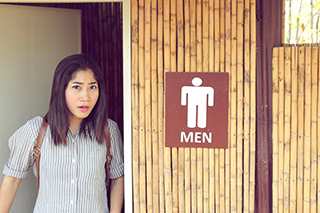- Home
- TrainingABC Blog
- Articles
- The Role of Gender Identity in Harassment Prevention and Training
The Role of Gender Identity in Harassment Prevention and Training

Author Name: TrainingABC
Posted: 11-02-2019 02:57 AM
Views: 2449
Synopsis: The role of gender identity in harassment has become an integral part of prevention and training. Organizations must make sure their training and harassment policies are updated to include this important topic.
The modern-day workplace is often full of a diverse group of people. In itself, this is a wonderful thing. Diversity in the workplace fosters innovation, creativity, and empathy. The financial impact, according to the World Economic Forum, is a no-brainer. Businesses of all shapes and sizes should seriously consider building a staff that contains employees from different backgrounds and with different viewpoints of the world.
While the business and moral case for diversity certainly exists, workplaces are also complicated. Some employees may not necessarily get along with their colleagues. Others may harass them due to their backgrounds or how they self-identify. This is especially true for employees who don’t traditionally identify as male or female.

Ultimately, all organizations need to consider the role of gender identity in harassment prevention and training. Doing so can not only help protect vulnerable members of your organization, but can increase morale within the organization as a whole.
Protecting Non-Binary Employees From Harassment
The statistics are stark. According to the National Transgender Discrimination Survey, which is conducted by the LGBTQ+ Task Force, a stunning 90 percent of transgender employees state that they have experienced some form of discrimination in the workplace. Approximately half of those respondents reported being harassed at work. Ultimately, non-binary employees have taken action. 77 percent of transgender and non-binary employees have taken active measures to avoid harassment and discrimination in the workplace. Some of those measures include omitting or hiding their gender identity or even delaying their transition entirely.
Even though workplaces are becoming more inclusive, non-binary employees are some of the most vulnerable groups for harassment. The harassment often comes in the form of teasing, jokes, unkind comments, slurs, and even threats regarding their gender identity. The Equal Employment Opportunity Commission (“EEOC”) has weighed in, stating that things like “using a name or pronoun inconsistent with the individual's gender identity in a persistent or offensive matter” can constitute sex-based harassment.

Clearly, organizations of all sizes must pay attention. Ignoring cases of harassment against non-binary employees will significantly affect your workplace culture. On the other hand, by being preventative and taking these risks seriously, you can create an inclusive culture for all of your employees. Not only will your employees feel happier and safer, but they will be more productive.
That said, you may be unclear about implementation. In other words, what can your organization do today to deter and prevent workplace harassment against non-binary individuals? There are several things to keep in mind here.
One of the most important things that employers can do is ensure that all of their employees are on the same page about all forms of harassment. If they haven't already, employers should create a comprehensive training program. While in-person training may be more effective, electronic training is not necessarily bad. In this training, instructors should absolutely include slides on harassment due to an employee’s gender identity. They should share the troubling statistics and stories of how non-binary employees have been harassed in the workplace. From there, the instructor should share ways that employees can report potential harassment to their human resources department. By the end of the training, all employees should be able to recognize the types of harassment and what they should do if they feel like they are a victim of harassment.

For as comprehensive as training may be, however, leadership comes from the top. Company leaders need to make it clear that harassment of non-binary employees will not be tolerated. An inclusive work environment does not happen on its own. Everyone from the CEO to top managers must pitch in. Doing this will set a strong tone and precedent that will flow throughout the entire organization.
Creating a Safe Work Environment
Even though the statistics are troubling for non-binary employees, your organization does not need to follow the trend. In fact, it can be known as an extremely safe workplace for all of its employees.
Granted, the road will not be easy. The larger your organization is, the more likely that there is a prejudiced bad apple. Employers cannot control the thoughts and actions of their employees. But that said, by making a real effort to tackle this problem and make your organization safe for non-binary employees, you will inevitably see positive results.
